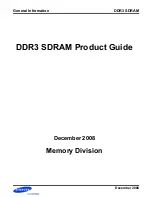
1-16
[DeviceA-gigabitethernet1/0/1] quit
[DeviceA] interface gigabitethernet 1/0/2
[DeviceA-gigabitethernet1/0/2] port link-aggregation group 1
[DeviceA-gigabitethernet1/0/2] quit
[DeviceA] interface gigabitethernet 1/0/3
[DeviceA-gigabitethernet1/0/3] port link-aggregation group 1
[DeviceA-gigabitethernet1/0/3] quit
# Configure Layer 2 aggregate interface 1 as a trunk port and assign it to VLANs 10 and 20.
This configuration automatically propagates to all the member ports in link aggregation group 1.
[DeviceA] interface bridge-aggregation 1
[DeviceA-Bridge-Aggregation1] port link-type trunk
[DeviceA-Bridge-Aggregation1] port trunk permit vlan 10 20
Please wait... Done.
Configuring GigabitEthernet1/0/1... Done.
Configuring GigabitEthernet1/0/2... Done.
Configuring GigabitEthernet1/0/3... Done.
[DeviceA-Bridge-Aggregation1] quit
# Configure to use the source and destination MAC addresses of packets as the global link-aggregation
load sharing criteria.
[DeviceA] link-aggregation load-sharing mode source-mac destination-mac
2) Configure Device B
Configure Device B as you configure Device A.
3) Verify the configurations
# Display the summary information about all aggregation groups on Device A.
[DeviceA] display link-aggregation summary
Aggregation Interface Type:
BAGG -- Bridge-Aggregation, RAGG -- Route-Aggregation
Aggregation Mode: S -- Static, D -- Dynamic
Loadsharing Type: Shar -- Loadsharing, NonS -- Non-Loadsharing
Actor System ID: 0x8000, 000f-e2ff-0001
AGG AGG Partner ID Select Unselect Share
Interface Mode Ports Ports Type
-------------------------------------------------------------------------------
BAGG1 S none 3 0 Shar
The output shows that link aggregation group 1 is a load sharing Layer 2 static aggregation group and it
contains three selected ports.
# Display the global link-aggregation load sharing criteria on Device A.















































